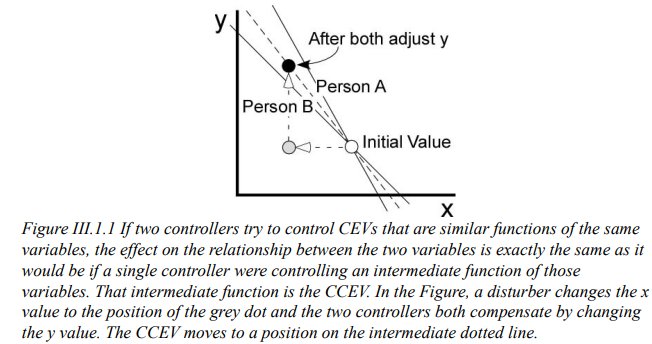Here’s a short passage from the introduction to collective control in PPC Volume III.
[Edited 2022/12/05 by Bruce to include the figure.]
[begin extract from PPC] The same applies if many controllers rather than just two control their perceptions of the same environmental variable or variables whose control necessarily influences a common variable. Since we usually take the Analyst’s viewpoint, we give this environmental variable the name “Collective Corresponding Environmental Variable” or CCEV, to distinguish it from the CEVs of the individual perceptions. No matter how many individual controllers contribute to the GVC, each of them controls only its own perception of its own CEV.
When we are concerned only with a single dimension of variation, the CCEV is identical in effect to any the individual CEVs, so one might ask what is the point of giving it a different name. The answer is that very seldom, if ever, do any two individuals actually have identical perceptual functions. If one person is controlling a perception p=x+y, another looking at the same object from a slightly different angle might be controlling p=1.2x+0.8y. These are not the same, but if someone used the TCV by disturbing the object in different directions, that person might easily conclude that 1.1x+0.9y was a controlled perception, even though neither of the participants were actually controlling that (Figure III.1.1). Only the Analyst who could see what both were individually controlling would be able to detect that neither was controlling a perception of exactly 1.1x+0.9y.

When there are more participants in the collective control and more dimensions of variation, the independent nature of the CCEV as distinct from any individual CEV becomes more evident, an important consideration when we come to topics such as the internal dynamics of political parties in Volume IV.